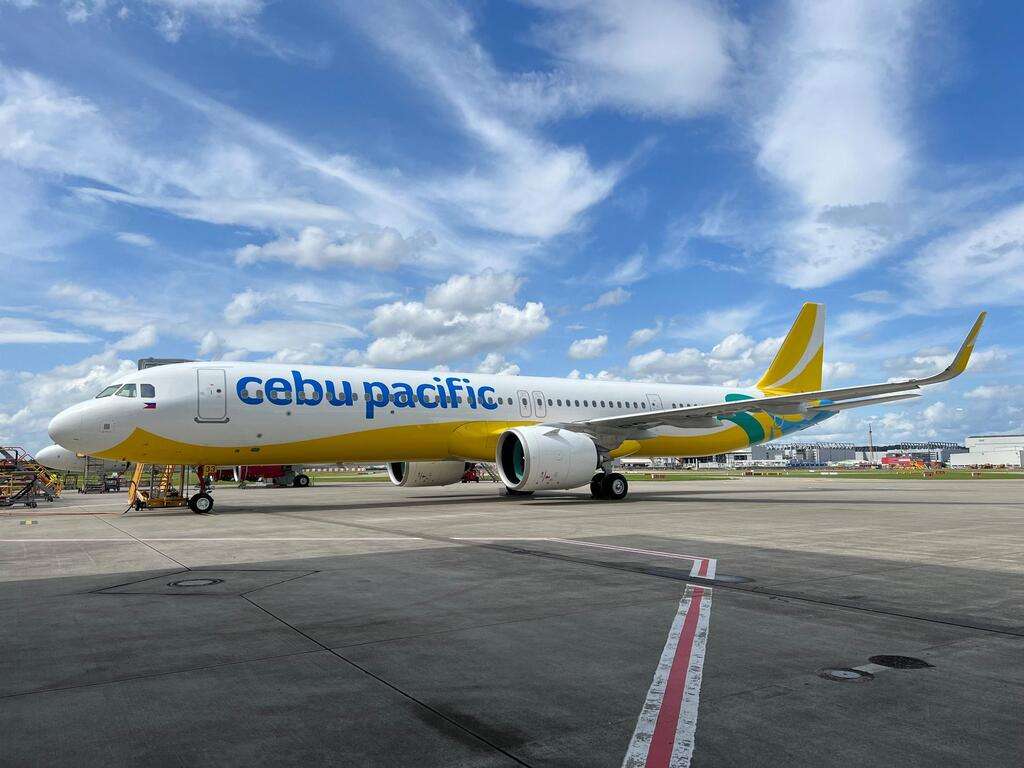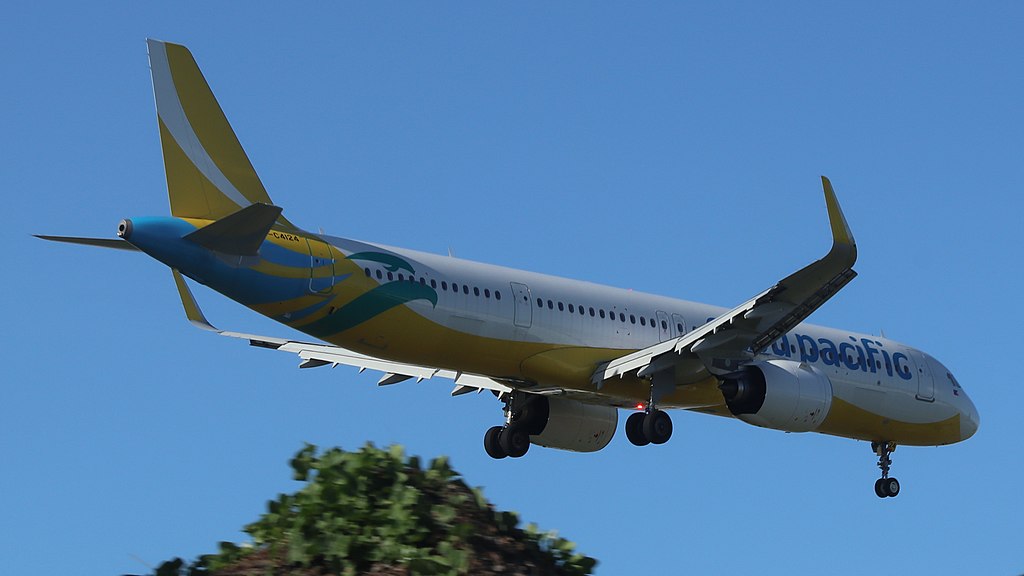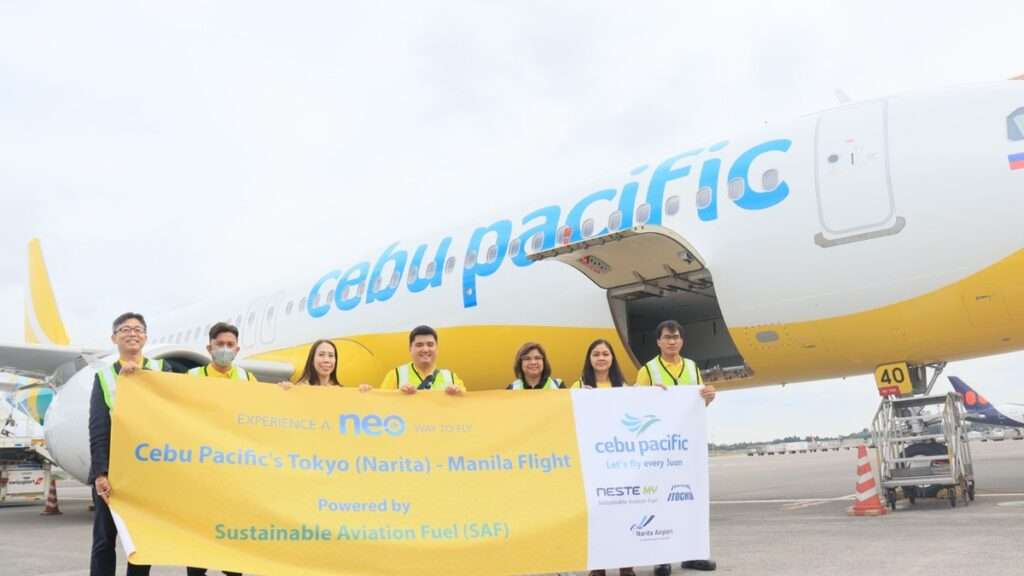Major Philippines low-cost carrier Cebu Pacific has successfully completed the first flight from Narita to Manila using a sustainable aviation fuel (SAF) blend.
The successful completion of Flight 5J 5055 from Narita to Manila using blended SAF marks a key sustainability step for the airline, and a first for Philippines’ carrier’s operating out of Japan.
This milestone also aligns with the global vision set forth by the upcoming COP28 summit, scheduled to take place in the United Arab Emirates this November.
Reducing Carbon Emissions with SAF
Cebu Pacific’s SAF-powered flight, which involved an Airbus 321neo and a 40% blended SAF sourced from Neste Corporation and distributed by Itochu Corporation, has led to a substantial reduction in carbon emissions per passenger—an impressive 44% drop.
This achievement cements Cebu Pacific’s position as the first Philippine carrier to employ SAF in a commercial flight departing from Japan.
[monsterinsights_popular_posts_inline]

Alexander Lao, President and Chief Commercial Officer at Cebu Pacific, emphasizes the airline’s dedication to sustainability.
He stated, “As we await sufficient SAF supply to meet the demand of the entire aviation industry, this inaugural Narita to Manila SAF flight represents Cebu Pacific’s ongoing efforts toward making air travel more sustainable.”
“Other decarbonization programs that we have put in place include investing in fuel-efficient NEOs, optimization of flight plans, and the adoption of fuel efficiency best practices to minimize fuel consumption.”
“All these are concrete sustainability initiatives that bolster our commitment and support for the
The flight was the end result of a collaboration between Cebu Pacific, Neste Corporation, and Itochu Corporation. Itochu, acting as the branded distributor of SAF in Japan, expressed its enthusiasm for the partnership.
Atsushi Onishi, Senior Officer of Itochu’s Energy Division, said, “We look forward to partnering with Cebu Pacific as we strive towards sustainable aviation. Our collaboration underscores the growing demand for SAF in the Asia-Pacific region, and we are ready to meet that need.”

Commemorative Tokens and In-Flight Activities
Passengers on this inaugural flight not only became a part of history but also received commemorative tokens and engaged in special in-flight activities.
The warm welcome and support from Narita International Airport added to the significance of this initiative.
Toshio Tashiro, Executive Officer of Narita International Airport, commented, “We are honored that Cebu Pacific has chosen Narita International Airport for this initiative. Being one of the select airlines to mount SAF flights in Japan, Cebu Pacific’s commitment to sustainability is commendable.”
Environmental Stewardship
During a stakeholder event in Dubai earlier this year, Cebu Pacific reiterated its 2022 Sustainability Report, underscoring the airline’s commitment to decarbonization, particularly through its fleet modernization program.
Cebu Pacific’s plan to reduce CO2 emissions per passenger by transitioning to an all-New Engine Option (NEO) fleet by 2028 is a significant step in this direction.
The airline has also reaffirmed its commitment to a sustainable future by pledging to use blended SAF throughout its entire commercial network by 2030.
This ambitious goal signals Cebu Pacific’s unwavering dedication to environmental stewardship and sustainable aviation practices.

Click the banner to subscribe to our weekly newsleter.









